Design ideas for awkward corners – 9 innovative and stylish solutions to try in challenging yards
These expert-approved ideas will bring space-savvy style, practicality and flair to your plot
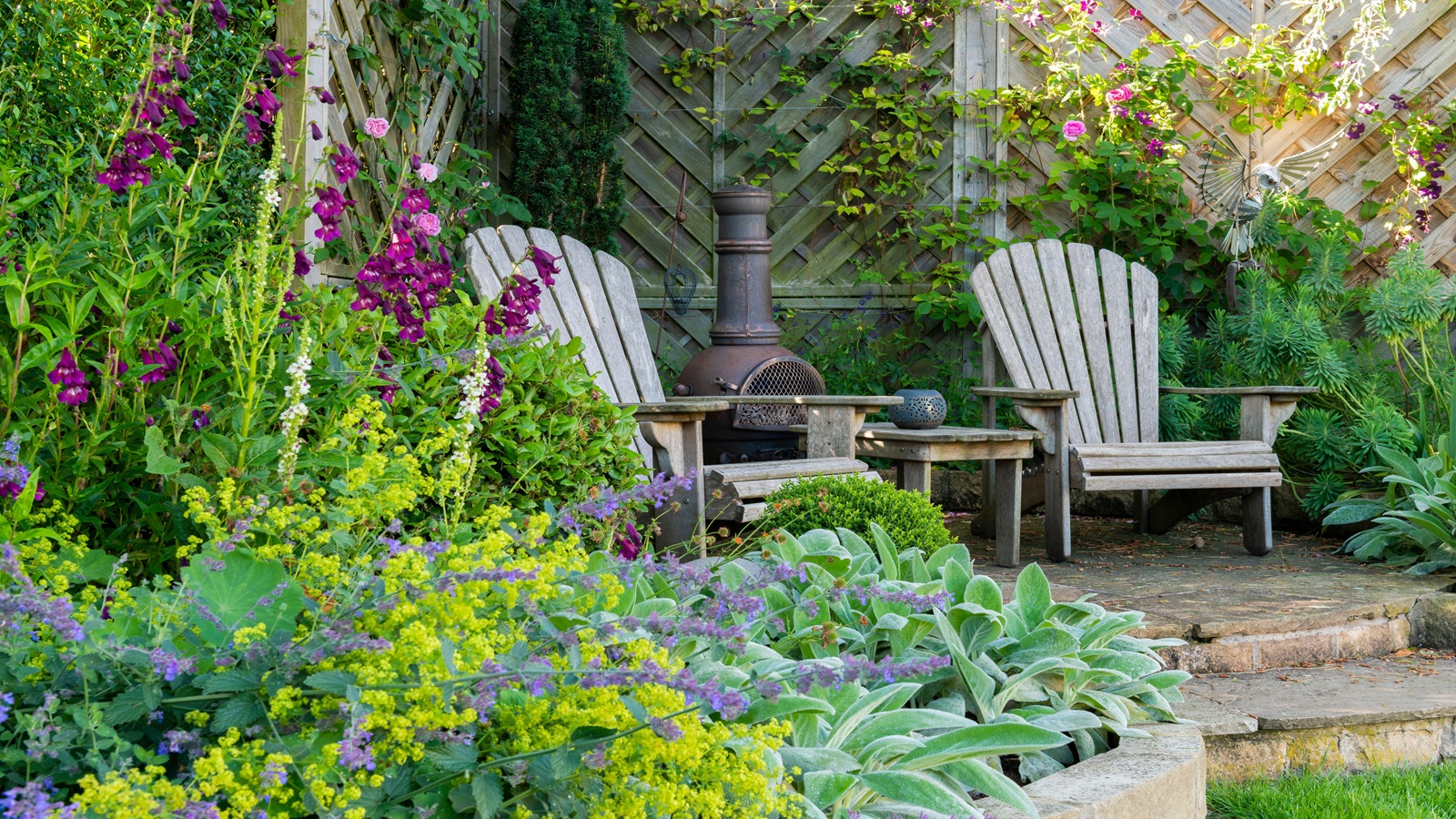
- Introduce a corner pond
- Show off a statement container plant
- Use stone boulders to punctuate the space
- Soften the space with trailing branches and foliage
- Plant up the surrounding boundaries
- Turn an empty corner into a destination
- Make a neglected corner cosy
- Tuck in a water feature
- Create a private corner for contemplation

Garden owners are frequently found hunting for design ideas for awkward corners. In my experience, almost every plot has at least one of these problematic spaces, so it’s not surprising that we all seek innovative solutions for our yards.
Overlooked and underused, outdoor nooks can quickly become unsightly, clutter hotspots, especially if they don’t have a clear purpose or design idea behind them. Often cramped, shady, dead-end areas, with a lack of natural features, they can prove tricky to manage and are drab distractions rather than striking focal points.
Fortunately, along with awkward-shaped garden ideas, there are plenty of fail-safe design ideas for awkward corners that professional designers love to use. Here we share our favorite tips.
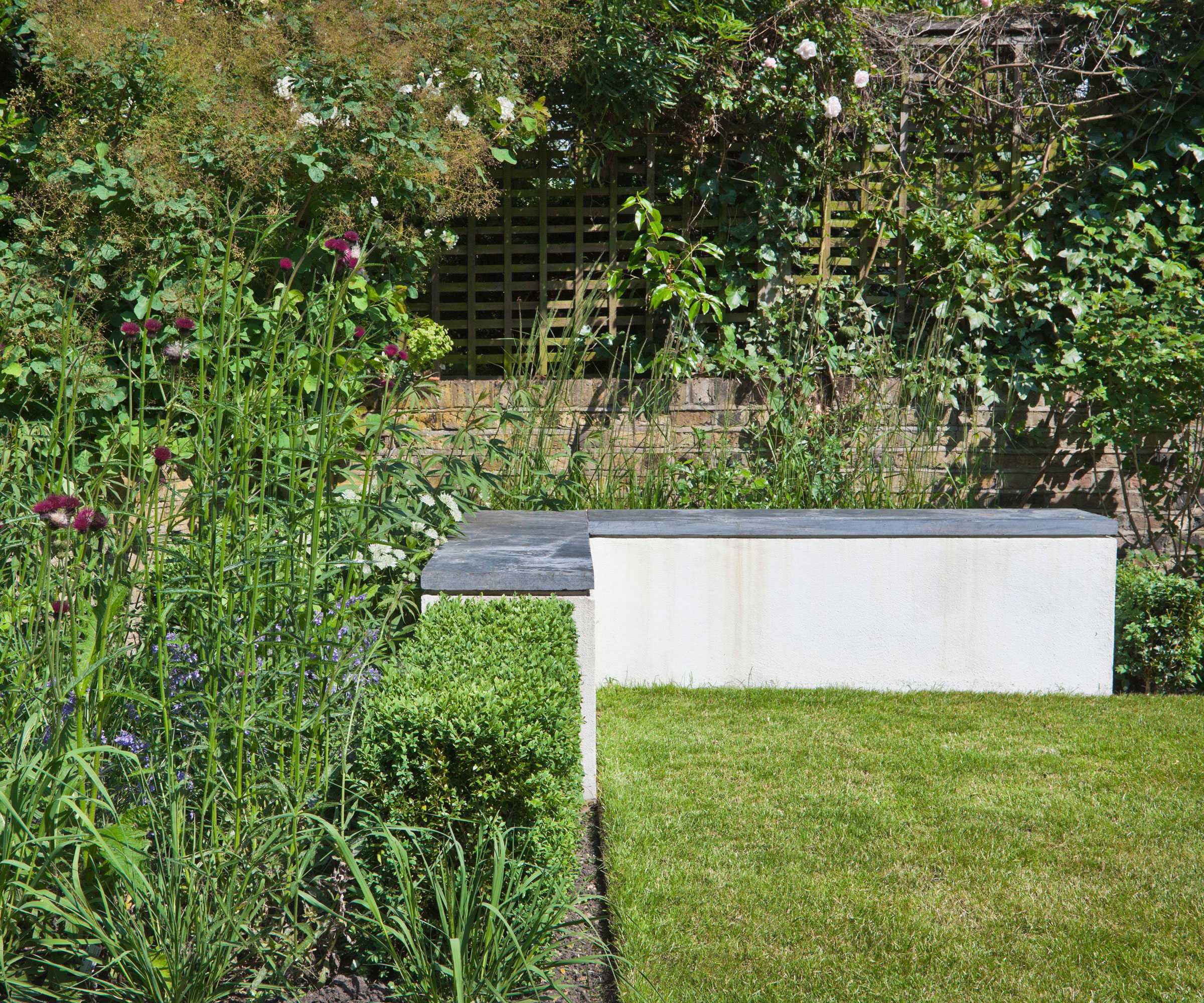
9 garden design ideas for awkward corners
'When landscaping, there are often small “leftover” awkward areas that can be challenging to use,' says Belgard's Joe Raboine. 'Most of the time, these areas just get covered with mulch and planted. However, if space is a premium, look for creative garden ideas to use these spaces.'
Introduce a corner pond
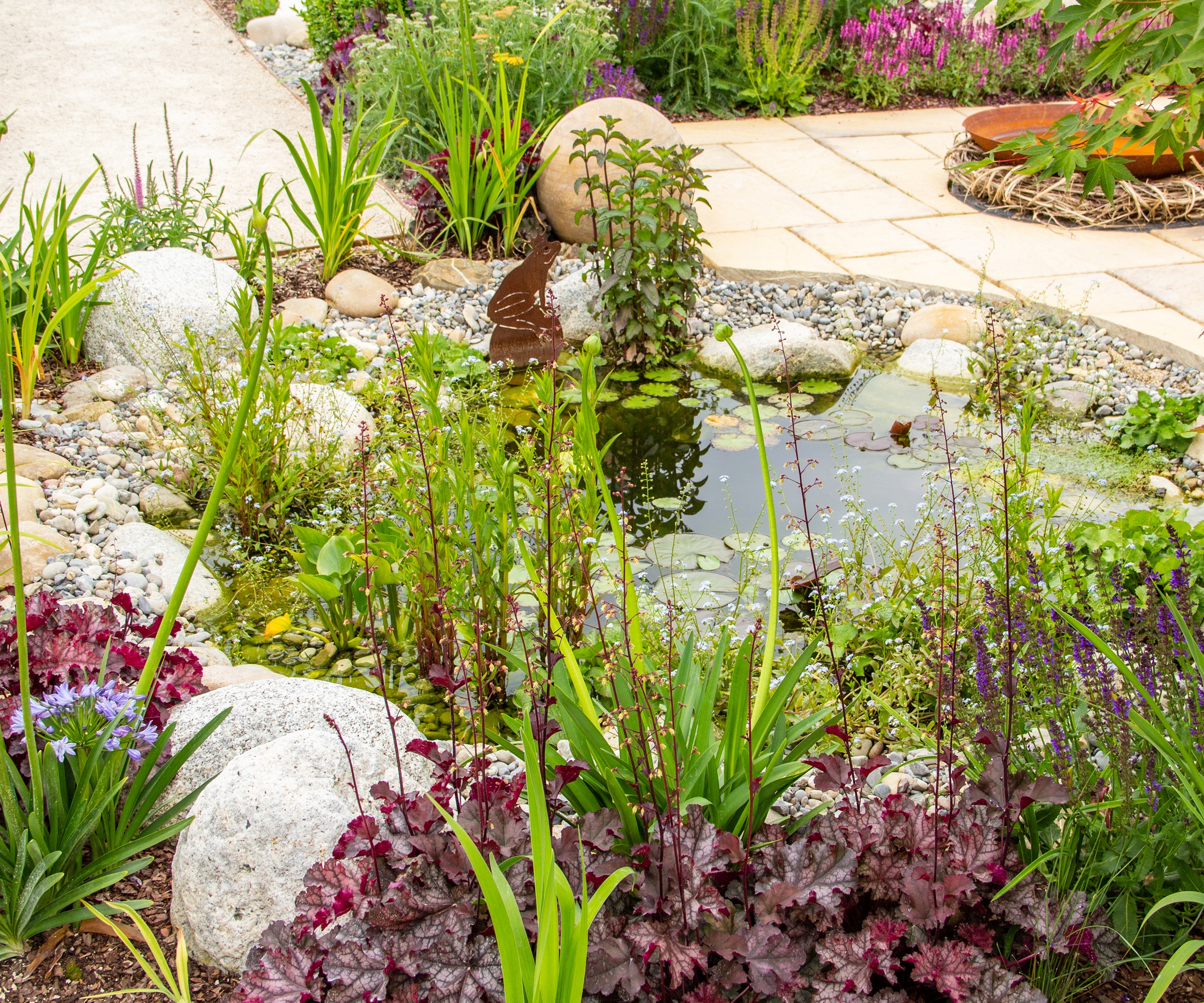
Creating a pond in a corner will instantly bring the space alive. Reflecting daylight and the sky above, it’s a nifty way of brightening up a shady area and introducing depth and movement too.
An irresistible draw for wildlife and pollinators, any body of water – from a reflection bowl, water table to a large, permanent installation – will soon be populated with microscopic life.
If you are new to pond gardening, try something like this pond starter kit from Walmart, which contains everything you need to get started, including a pump and non-toxic liner.
Design expertise in your inbox – from inspiring decorating ideas and beautiful celebrity homes to practical gardening advice and shopping round-ups.
Creating a mini ecosystem and increasing the biodiversity of your yard will soon attract larger visitors, including insects, amphibians, birds and small mammals, which will also provide natural pest control for your wider garden.
Nestle an in-ground pond naturally into a corner by surrounding it with thoughtful planting. Ground cover and clump-forming plants such as Baby’s tears - Soleirolia soleirolii, coral bells and salvia will help to blur the pond’s edges and soften the surrounding vertical surfaces, gently guiding the eye from the water upwards into the angled space.
Aquatic marginals perform a similar task as well as helping to oxygenate and clarify the water.
Show off a statement container plant
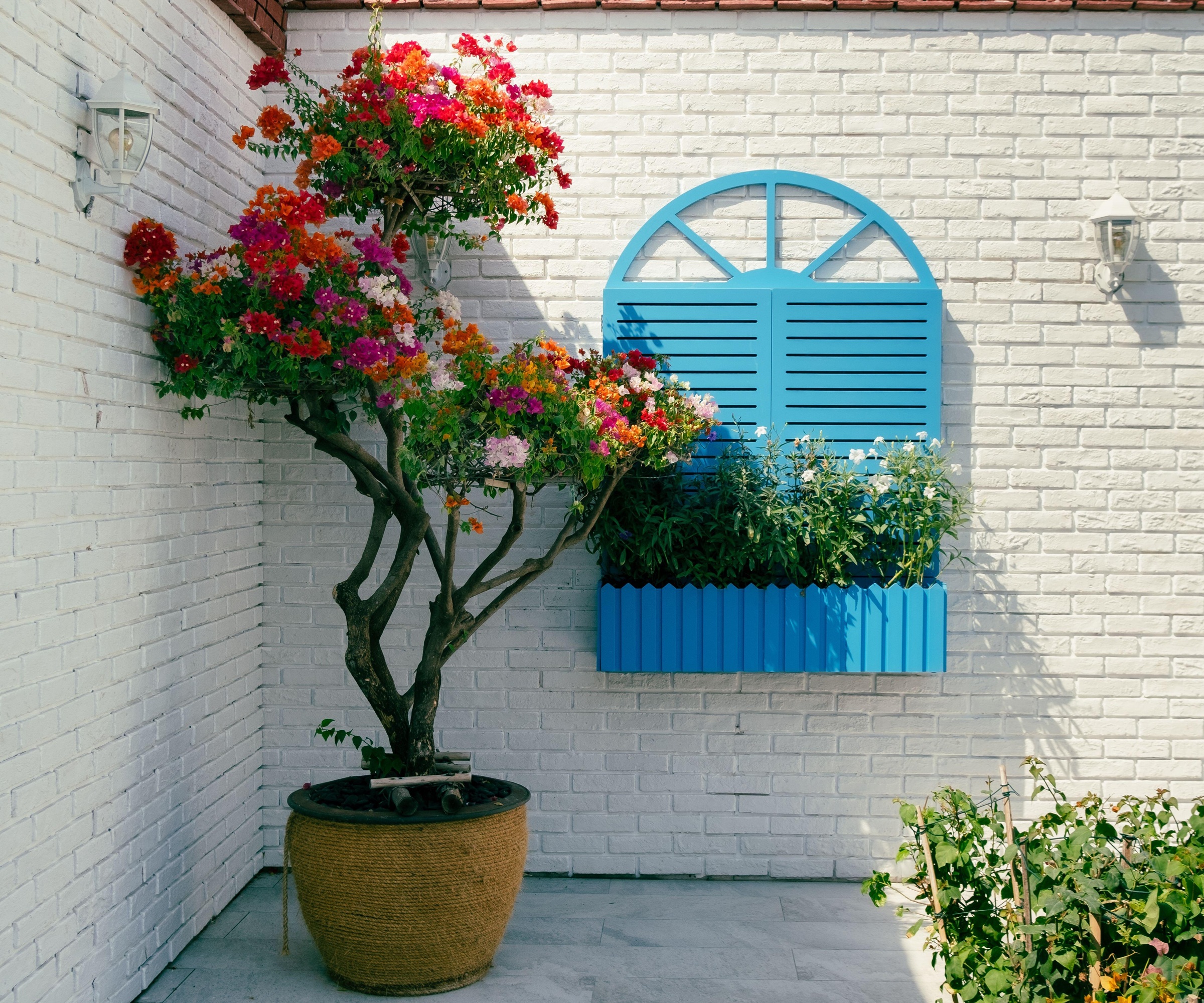
Don’t settle for an underwhelming, empty corner, especially if it is in a prominent position in your yard. Up the drama and use it to showcase a spectacular statement plant instead.
A single, carefully chosen specimen – whether it’s a showy shrub, small tree or meticulously trained bonsai or topiary – can make an eye-catching focal point positioned against converging walls.
There are also many climbers to grow in pots, which can be trained over an obelisk or trellis. Try something like this star jasmine, available from Amazon, for evergreen cover and fragrance even in shady, challenging corners.
'Awkward corners are generally begging to be softened with planting,' says landscape designer Kevin Lenhart.
'In smaller corners, a large container plant is often enough, but if space allows, tucking in larger in-ground planting areas can make a sizeable contribution to the feel of a space.'

Kevin Lenhart is the design director at Yardzen and a licensed landscape architect. He is a LEED-Accredited Professional in Neighborhood Development, and holds a Master of Landscape Architecture degree from UC Berkeley’s College of Environmental Design. As a designer, Kevin’s practice is rooted in a commitment to making high-quality design available to everyone, and to using design to improve physical, cultural, and ecological well-being.
Use stone boulders to punctuate the space
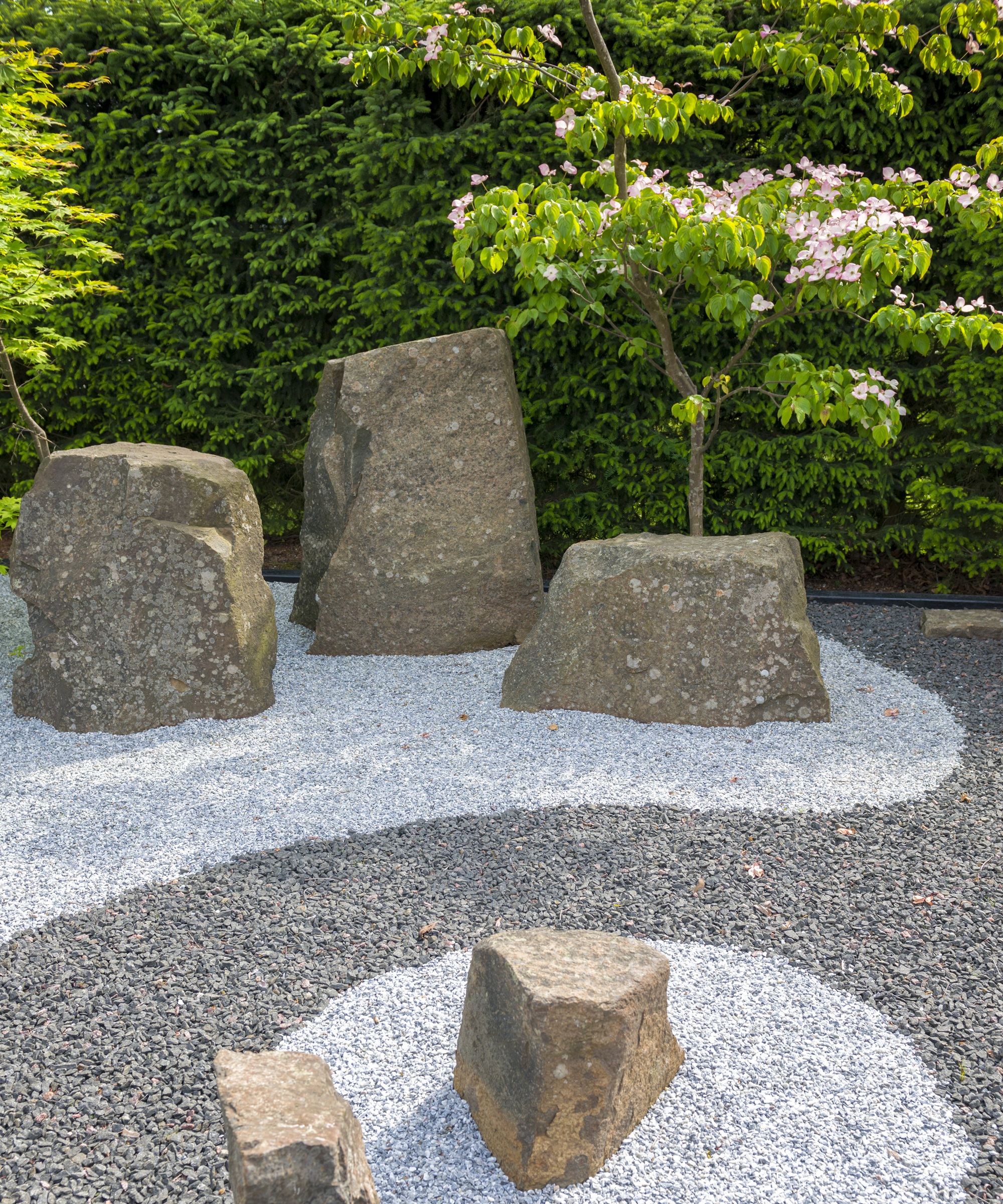
Add interest and distract from harsh lines by filling any corner with a shapely stone boulder or three.
'For awkward corners, I almost always use a garden feature to “blend” the corner into the surroundings,' shares landscape designer Elliot Rose.
'This is usually a large singular or cluster of boulders which, when placed, can draw your eye away from the fact that you have an awkward convergence of lines and surfaces.'
Creating a sense of permanence to contrast with the surrounding, ever-changing planting, it’s an easy and impressive focal point for any style of garden.
Blend any monolith or group of stones into its location by adding in casual groupings of smaller rocks and pebbles.
For a bold and more daring look, set the boulders against evenly spread stone chippings in contrasting tones.

Growing up in Marin County, Elliot worked alongside his father who owned a construction business that operated throughout the Bay Area. Following his college studies in landscape design and horticulture, he went on to open a commercial aquaponics farm in Half Moon Bay, which eventually led to his career in landscaping. At a local high-end design and build firm, Elliot served as a construction foreman and assistant designer until he opened Wildwood Landscapes. Elliot continues to bring his passion for design and strong technical construction background to every project, leading clients from the initial site-visits to the polished installation.
Soften the space with trailing branches and foliage
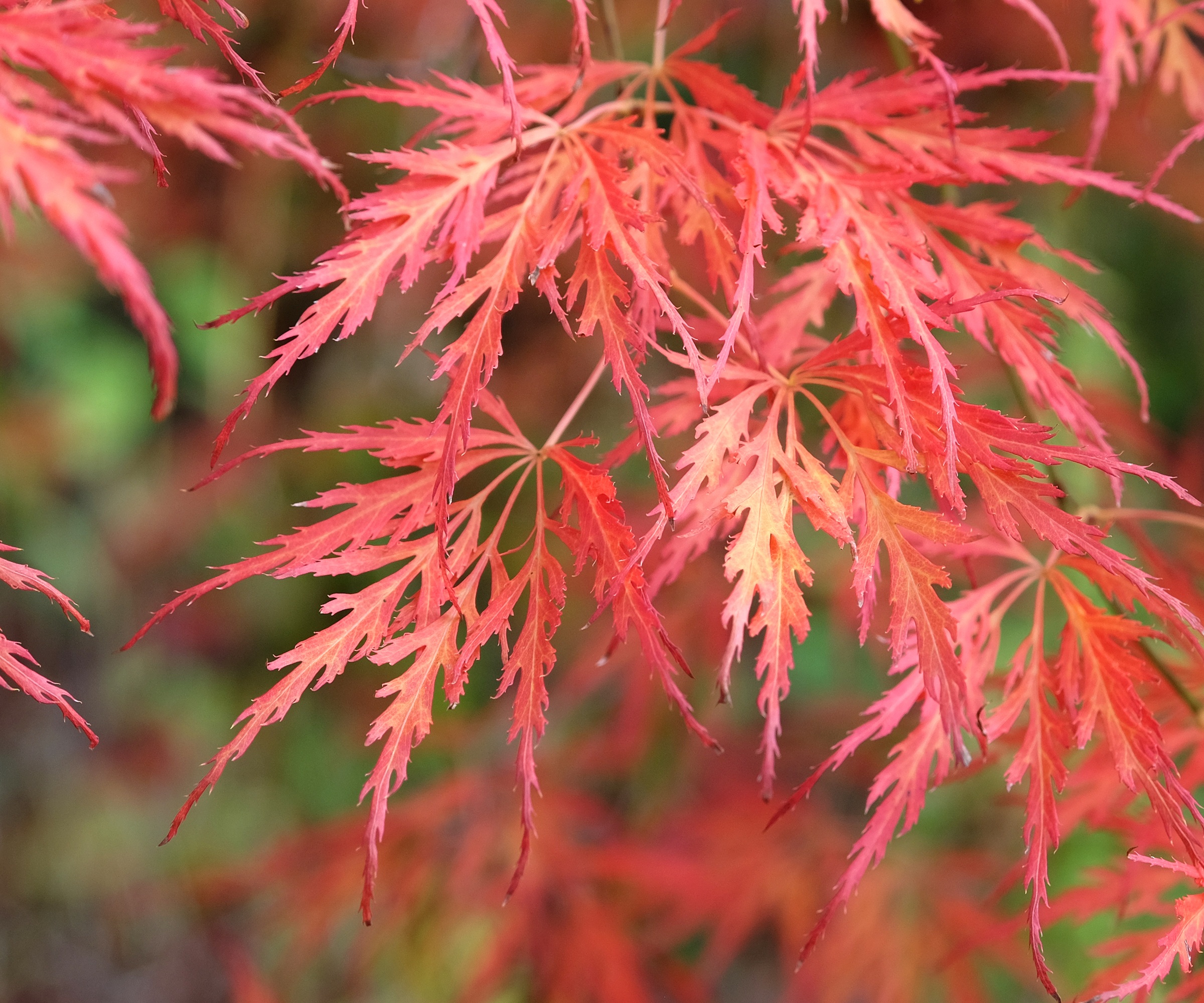
Height and form are key for filling any empty yard corner, and a well-chosen tree such as the best dwarf trees and best shade tolerant trees can be the perfect long-term candidate.
'Corners can be a good place for a large specimen tree,' says Elliot Rose. 'If using a specimen tree, consider using something that is busy or full of foliage, like a weeping variety or another which draws your eye away from the harsh lines on the ground or obscures with foliage.'
He adds, 'we’ve found ourselves using a lot of acacia varieties in these situations as they grow in quickly and have lots of varied texture - Acacia stenophylla, iteaphylla, baileyana are a few species to look at. Avoid leaving sparse or low plantings in these areas as this will make the corner more obvious - best to fill it up!'
Landscape architect Stacilyn Feldman also notes that a carefully placed statement tree can also play an important role in the wider garden. 'If it’s an awkward corner that is seen but not accessible, consider a specimen tree that could add background to the rest of the space.'
Evergreen favorites including Californian lilac, the strawberry tree and dwarf eucalyptus will add notable year round color, while the Tibetan cherry, Himalayan birch and paperbark maple will also dazzle with their vivid bark.
Encroaching tree roots can prove a problem if you are planting near a property, retaining or supporting wall. If you are worried this may cause an issue, opt for one of the best trees to grow in pots and be sure to find out the trees never to plant in a small backyard.
Plant up the surrounding boundaries

Often, it’s the sheer scale and dominating nature of the converging garden boundaries that make these corners so tricky to handle.
Whether they are mismatched in color, finish or material or seamlessly identical, they can make a space feel very oppressive and intimidating but don’t worry, there are plenty of designer tricks to try.
'Like narrow strips, corners are often bounded by walls or fences, so the same guidance applies about integrating taller plants to hit a sufficient vertical scale in your planting design,' explains Kevin Lenhart.
'Placing tall, slender evergreens in opposing corners around a doorway or path threshold utilizes corners to establish a sense of symmetry.'
Climbing plants – especially evergreen and fragrant species such as star jasmine, winter jasmine or clematis armandii – will smother vertical surfaces in a mass of tactile foliage that is peppered with heavenly, seasonal blooms.
Train them up a wooden trellis, a fan, or espalier, or a grid of tensioned wires for added effect. We like the look of this Stainless steel wire trellis kit from Walmart.
Turn an empty corner into a destination
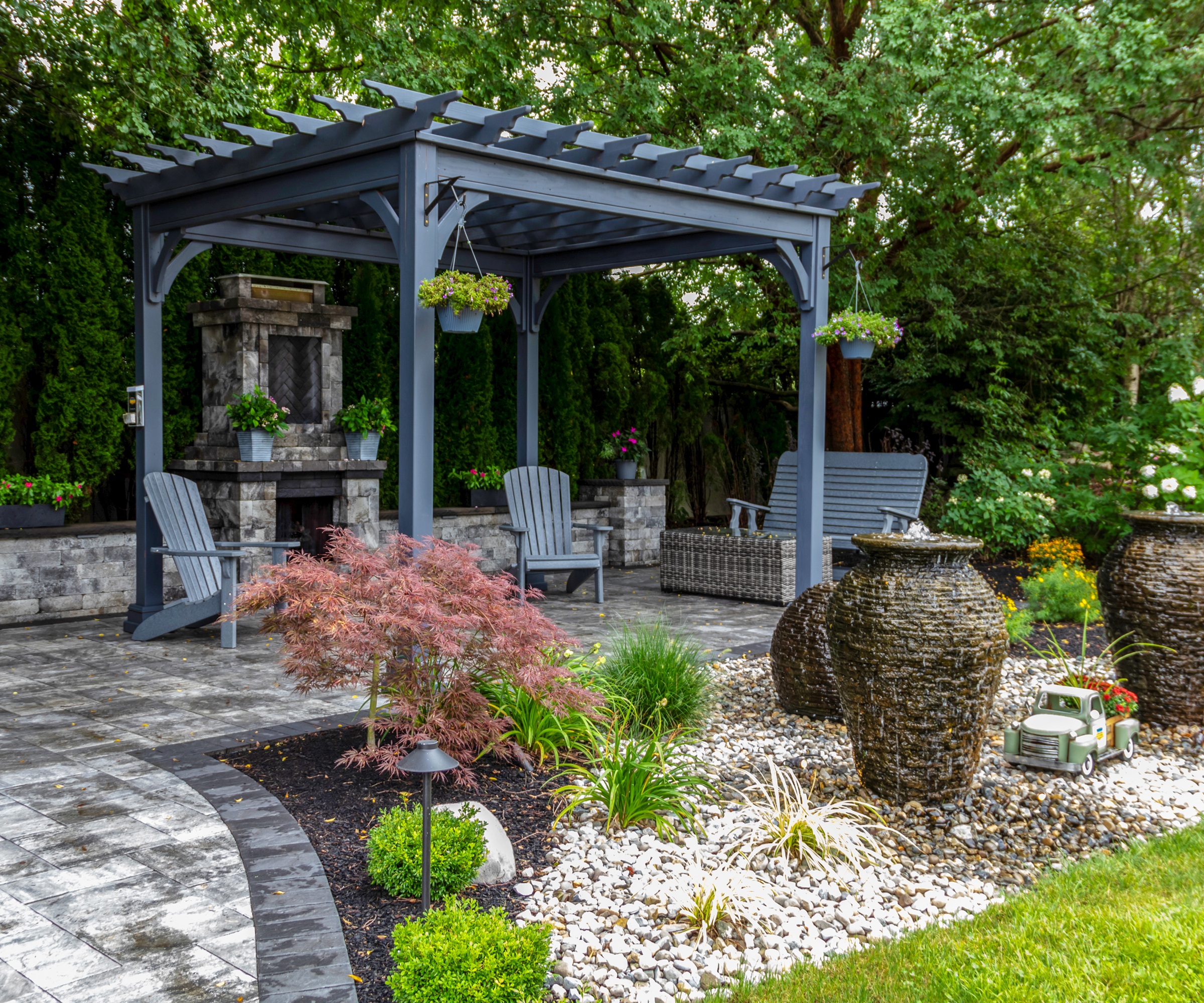
Bring structure and purpose to any corner of a large backyard with a gazebo, garden shelter or summerhouse.
The perfect solution for any shady area, particularly beneath mature trees with extensive root systems, these structures form stunning focal points in which to shelter, gather with friends and enjoy the yard year-round.
Nestle amongst densely planted beds and borders with a view over a majestic lawn or terrace. Alternatively, hide behind decorative screening or hedging at the far end of a meandering pathway for instant mystery and intrigue.
Off-the-peg designs are usually built with a square, hexagonal or octagonal footprint. Choose the best fit for your plot, taking into consideration any potential views of the surroundings, how you wish to use and enjoy your new covered space and how many people it needs to accommodate.
Walmart has a wide selection of pergolas to choose from.
Make a neglected corner cosy
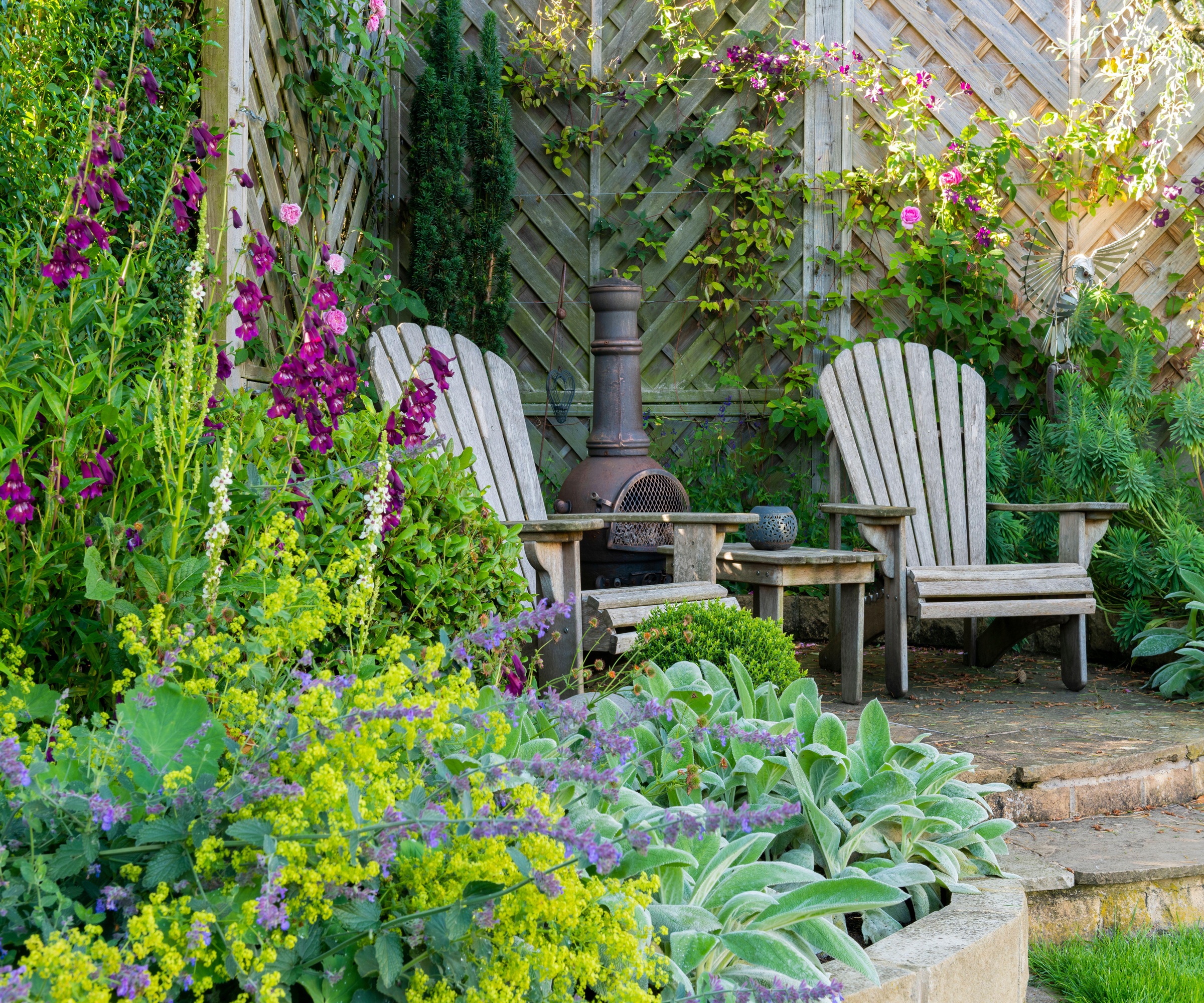
Did you know corners – particularly those in the garden – can have a strong emotional effect on how we feel and perceive our outdoor space? Sounds odd? Well, it’s all down to our placement in relation to them and some deep-seated human survival instincts.
'Beyond planting, corners can be a biophilic resource in replicating the phenomenon of prospect and refuge,' says Kevin Lenhart.
'Tall walls bounding a corner can create a comforting sense of enclosure, or refuge, while a view from the corner outward to distant focal points simulates the experience of our distant ancestors peering out across the savannah.'
Bear these points in mind when deciding on what to do with a tricky yard corner and you can completely alter your garden’s dynamics.
'Drop in some comfy, attractive seating, clear sight lines, and you’re on your way to providing a space that offers a restorative biophilic experience,' says Kevin.
Landscape designer Stacilyn adds, 'Like the chair next to a fireplace in an old home, it can become the favorite spot when properly furnished with a comfortable chair, table and possibly some screening.
'Don’t give in to the temptation to plant it full, but give in to the possibility of it being a bonus intimate space.' Take a look at these best plants for privacy for further inspiration.
Tuck in a water feature
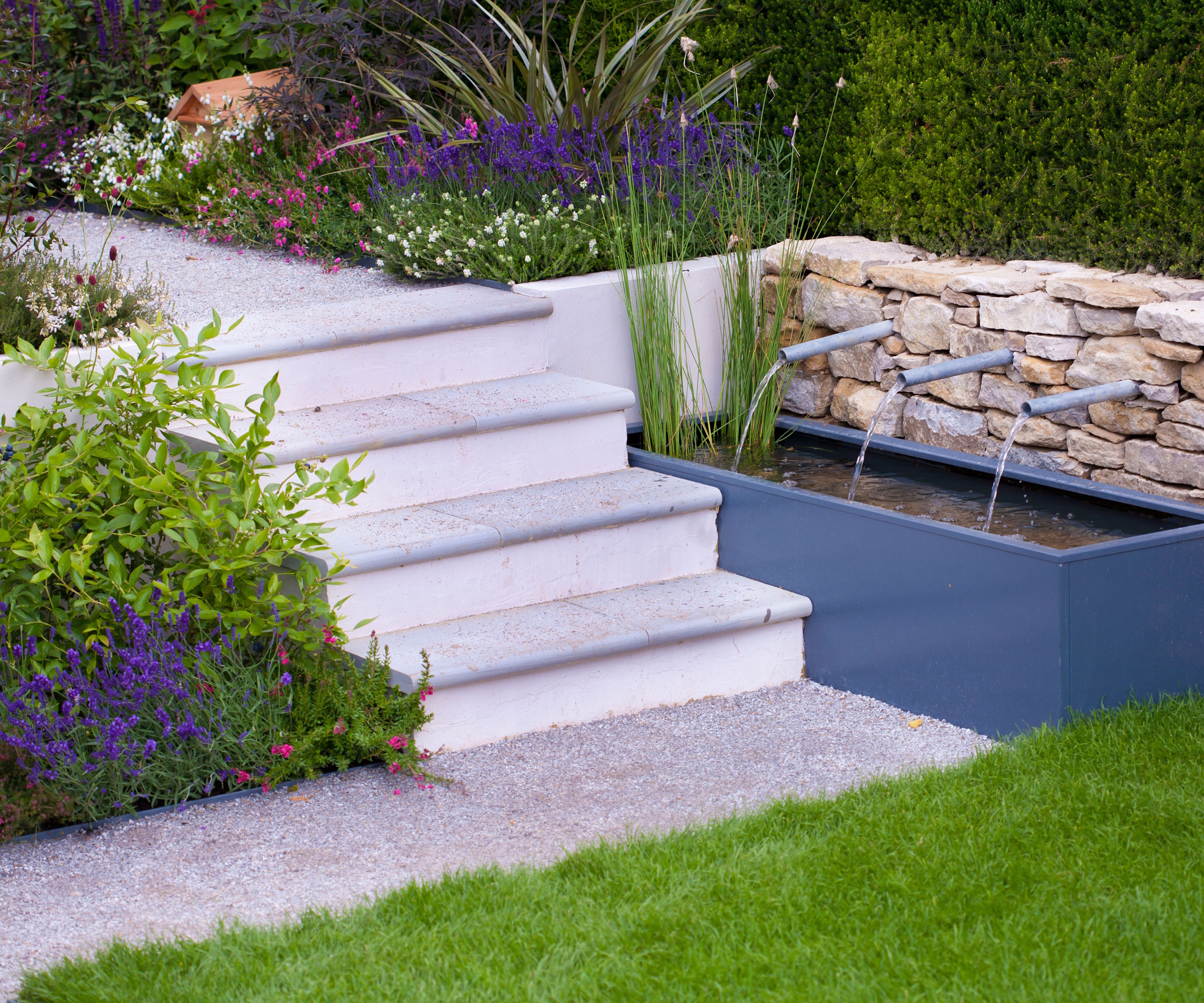
However well you plan your outside space, chances are that there will still be a pesky, empty corner that leaves you stumped for ideas.
It could be next to a deck, beside the carport, or tucked between steps and a retaining wall. One go-to solution loved by designers is to incorporate moving water. The perfect way to distract from the surrounding walls and awkward angles, it will instantly turn a problematic area into a stunning focal point.
If you are lucky, the dimensions of the existing corner may fit an off-the-peg water table – a self-circulating water feature with one or more water jets which can be varied to create gentle ripples or vertical jets.
Another effective design trick is to use the surrounding walls to create falling water. Sleek water chutes – often known as water blades – create a seductive transparent water curtain while a series of simple water spouts, spilling into a pool below, offer a livelier and more dramatic effect.
We are impressed with the range that Amazon offers, from Waterfall pool fountains to spilling garden water bowls.
Create a private corner for contemplation
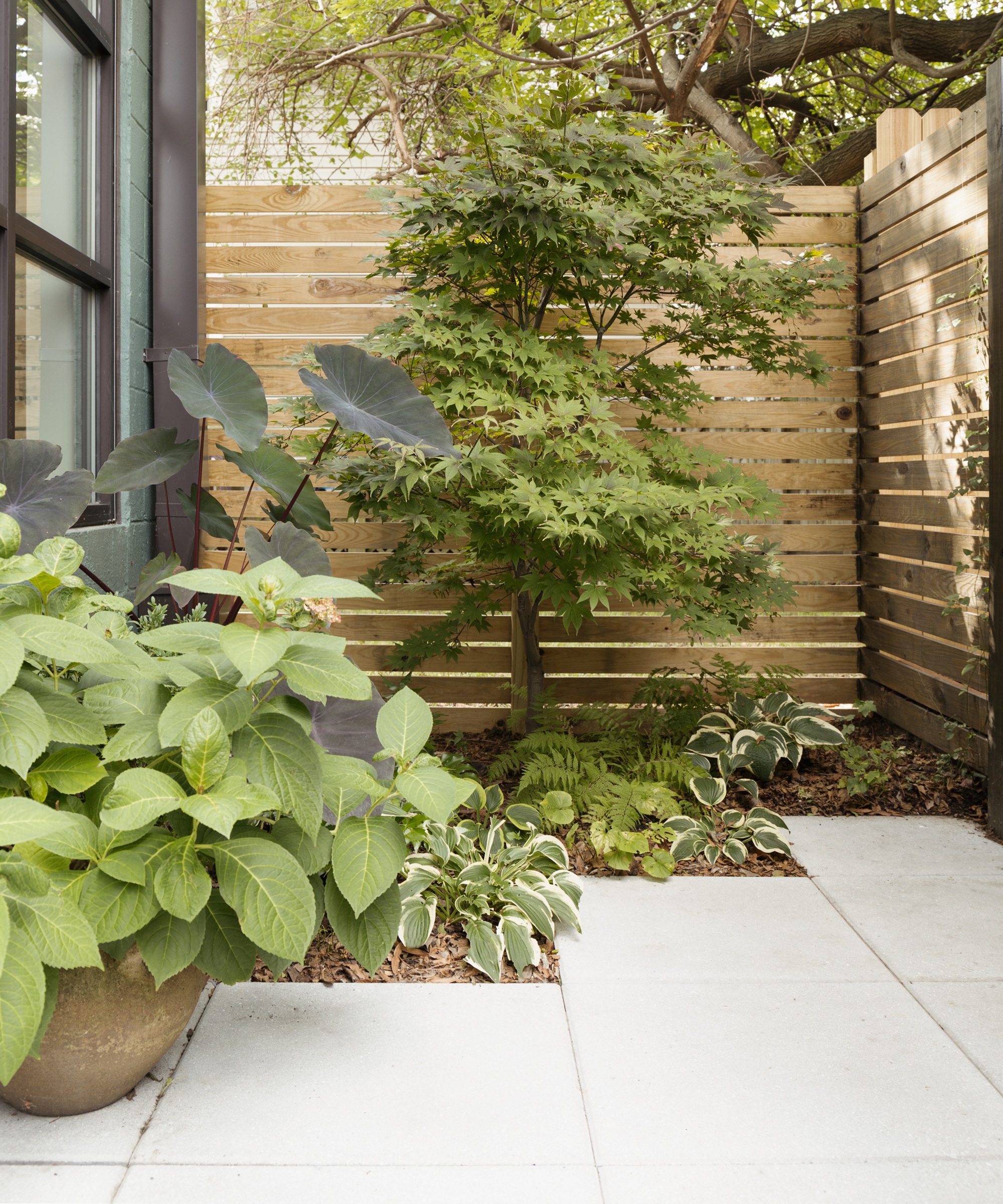
The specific location of any awkward outdoor corner will inform how the space can be best used.
If it’s seldom seen from the house or appreciated from the main entrance way or driveway, you may be tempted to overlook it altogether, but you would be missing a valuable opportunity, as many leading designers explain.
'Most landscape plans don’t consider spaces for personal use,' says Joe Raboine. 'These are spaces that are meant for an individual to disconnect from the built world and reconnect with the natural one. Small, hidden spaces are perfect for just that.'
Peaceful woodland and Japanese-inspired gravel and rock gardens are ideally suited to these secluded spaces. Inviting quiet thought and careful appreciation of the contrasting natural surfaces, beautiful foliage, and seasonal changes, they can become invaluable spaces for daily well-being.
Of course, awkward corners are not the only design problem our yards can present us with.
From small backyard layout ideas through to learning how to make the most of a side yard, there are plenty of transferable design tricks to discover.

Joe is the Vice President of Design, Oldcastle APG, parent company of Belgard Hardscapes
A former contractor with 25+ years of experience in the outdoor living industry. He leads design for Oldcastle APG, a leading outdoor materials manufacturer of hardscapes, composite decking, fences, railing, lawn and garden materials, pool finishes, and more.

Stacilyn Feldman is a Principal at Oehme, van Sweden in Washington, DC. She has designed, managed, and shepherded over a decade’s worth of the firm’s landmark projects including green roofs, urban development, botanic gardens, and residential estates. Stacilyn holds a Bachelors of Landscape Architecture from The Pennsylvania State University.

Journalist Jill Morgan has spent over 20 years writing and editing gardening, interior and property features. Titles she has worked on include The English Home, House Beautiful, Ideal Home, Houzz and Modern Gardens and she writes regularly for H&G as a Contributing Editor. Whilst she is a dab hand at renovation projects and DIY, she is happiest when out digging in the garden or planning a new border.